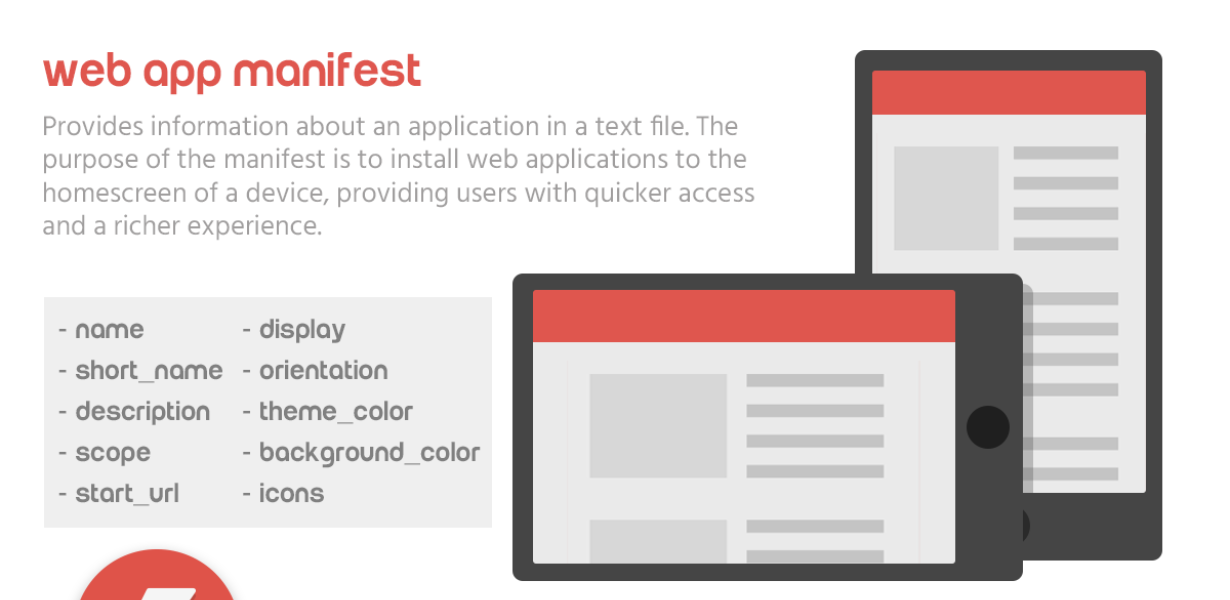
Progressive Web Apps Revolution: Harnessing the Power of Web App Manifest for Cross-Platform Success
- Post
- August 8, 2023
- Progressive Web Apps, Web App Manifest, Web Technologies
- 0 Comments
In today’s rapidly evolving digital landscape, the emergence of Progressive Web Apps (PWAs) has paved the way for an innovative approach to web development, combining the best of both worlds: the seamless experience of a native app and the accessibility of a website. At the heart of this revolution lies the Web App Manifest – a JSON file that holds the key to unlocking the full potential of PWAs. In this comprehensive guide, we delve deep into the world of PWAs and explore how harnessing the power of the Web App Manifest can lead to cross-platform success, providing users with unmatched experiences across devices.
Understanding the Web App Manifest
At its core, the Web App Manifest is a JSON file that defines the metadata of a Progressive Web App. This metadata includes essential information such as the app’s name, icon, display mode, and background color, allowing developers to tailor the app’s appearance and functionality. By defining these attributes, the Web App Manifest empowers developers to create engaging and consistent user experiences, regardless of the platform or device being used.
Crafting Engaging User Experiences
A well-optimized Web App Manifest plays a pivotal role in shaping user experiences. By specifying the display mode – be it full screen, standalone, or minimal-ui – developers can ensure that the app seamlessly integrates into the user’s environment. This level of control not only enhances the visual appeal but also contributes to improved user engagement and retention rates.
Ensuring Cross-Platform Compatibility
The power of PWAs lies in their ability to function flawlessly across various platforms and devices. The Web App Manifest’s adaptability is crucial in achieving this feat. Through the ‘start_url’ attribute, developers can define the entry point of the app, enabling users to access it directly from their home screens or app drawers. This cross-platform compatibility fosters a consistent experience, eliminating the need for separate native apps for each platform.
Optimizing for iOS: Navigating the Challenges
While the Web App Manifest simplifies cross-platform development, certain nuances must be considered, especially when targeting iOS devices. iOS introduces its own set of requirements, such as the need to customize icons and splash screens. By adhering to these specifications and utilizing the ‘apple-touch-icon’ attribute, developers can ensure that their PWAs integrate seamlessly into the iOS ecosystem.
Enhancing Discoverability and SEO
Beyond its impact on user experiences, the Web App Manifest also holds significant implications for search engine optimization (SEO). Each time a user installs a PWA, the browser fetches the Web App Manifest, providing search engines with valuable information about the app’s purpose and functionality. This can lead to improved visibility and rankings in search results, expanding the app’s reach and driving organic traffic.
Implementing Web App Manifest: Best Practices
To harness the full potential of the Web App Manifest, developers should adhere to a set of best practices. These include:
Comprehensive Icons: Providing a range of icons to accommodate various devices and display scenarios.
Optimal Start URL: Defining a clear and relevant start URL that aligns with the app’s core functionality.
Appropriate Display Modes: Selecting display modes that enhance user experiences based on usage scenarios.
Metadata Accuracy: Ensuring accurate and up-to-date metadata to reflect the app’s current state.
Common Pitfalls to Avoid
While leveraging the Web App Manifest can lead to remarkable cross-platform success, there are pitfalls to watch out for:
Oversight in Icon Sizes: Neglecting to include icons of the appropriate sizes can lead to inconsistent appearances on different devices.
Ignoring iOS Guidelines: Failing to adhere to iOS guidelines for icons and splash screens can result in suboptimal experiences on Apple devices.
Neglecting Regular Updates: Not updating the Web App Manifest to reflect changes can lead to outdated information and potentially impact user engagement.
Final Words
In the dynamic landscape of modern web development, the Web App Manifest stands as a powerful tool, enabling the creation of Progressive Web Apps that transcend platforms and devices. By harnessing its potential, developers can craft seamless, engaging, and versatile user experiences that cater to a diverse audience. Embrace the revolution of Progressive Web Apps and unlock the cross-platform success that awaits.
Commonly Asked Questions
Q1. What is the Web App Manifest, and why is it important for Progressive Web Apps?
The Web App Manifest is a JSON file that contains essential metadata for Progressive Web Apps. It plays a crucial role in defining the app’s appearance and behavior across different platforms, ensuring consistent user experiences.
Q2. How does the Web App Manifest contribute to cross-platform success?
By defining attributes such as display mode and icons, the Web App Manifest enables PWAs to seamlessly adapt to various platforms, providing users with a unified experience regardless of the device they’re using.
Q3. Are there specific considerations for iOS when working with the Web App Manifest?
Absolutely. iOS has its own guidelines for icons and splash screens. Adhering to these guidelines and utilizing attributes like ‘apple-touch-icon’ ensures optimal performance and integration on iOS devices.
Q4. Can the Web App Manifest affect SEO and discoverability?
Yes, it can. Search engines use the information from the Web App Manifest to understand the app’s purpose and functionality. This can lead to improved SEO and increased visibility in search results.
Q5. What are some common mistakes to avoid when working with the Web App Manifest?
Failing to include the right icon sizes, ignoring iOS guidelines, and not updating the manifest to reflect changes are common pitfalls. Attention to detail is crucial for a seamless user experience.




